Acerophagus papayae can slow the spread of the invasive papaya mealybug and benefit the wider community. Recent monitoring efforts have shown that the natural enemy is reaching long distances away from the original release sites.
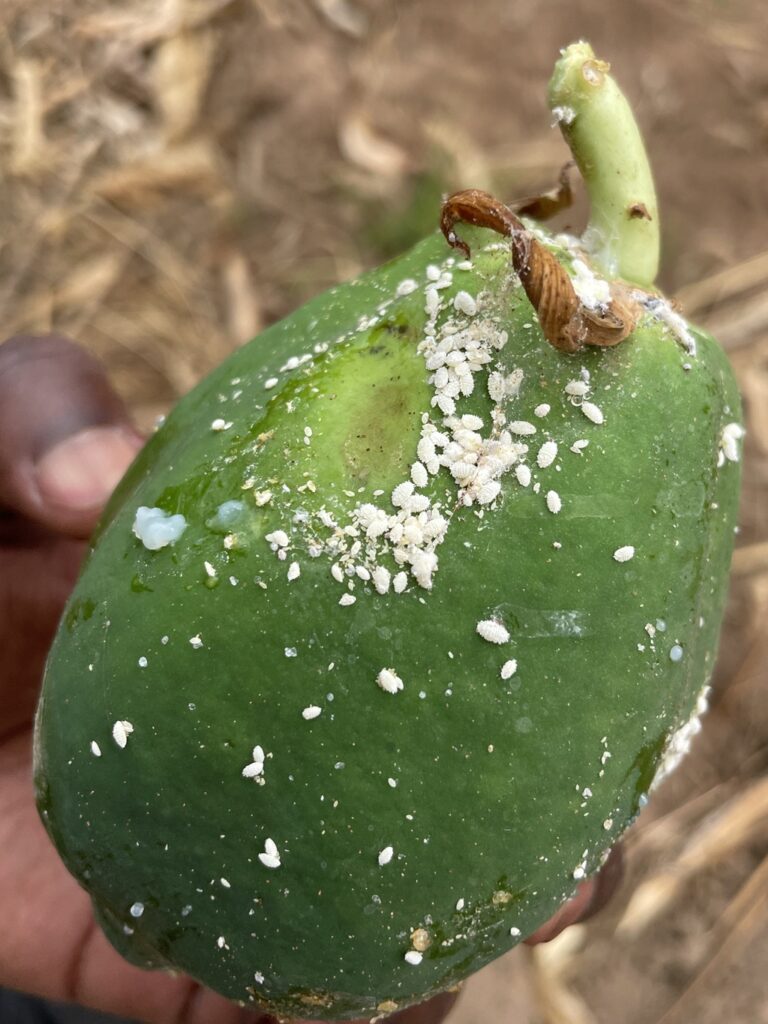
Invasive species pose a persistent threat to agriculture, particularly in tropical and subtropical regions where favourable conditions allow rapid spread and reproduction. The papaya mealybug (Paracoccus marginatus) is an invasive pest that causes severe damage to crops such as papaya, citrus, cassava, and avocado. It is native to Central America but has become invasive in places such as South and Southeast Asia and West and East Africa. It was first observed in Kenya in 2010 and has since then established across the country.
Papaya mealybug harms plants by injecting toxic substances into them and depleting them of their vital resources. Additionally, the papaya mealybug impairs photosynthesis by secreting honeydew onto the plant’s surface and inducing mould growth on infected fruits, leaves and stems, making the affected fruits inedible and unmarketable. The papaya mealybug can cause a crop loss of over 90% and sometimes even total crop failure. Farmers have often relied on chemical pesticides to control destructive pests like papaya mealybug. However, these can be costly, harmful to health and the environment, and ineffective because of their protective waxy coating.
Classical biological control of papaya mealybug in Kenya using Acerophagus papayae
One way to combat the papaya mealybug is through classical biological control (CBC). This is a safer, cheaper, and sustainable method of managing papaya mealybug. CBC of papaya mealybug involves releasing its natural enemy, Acerophagus papayae. The A. papayae is a tiny wasp that parasitizes the papaya mealybug hence lowers its numbers naturally. It has been found to be effective in controlling papaya mealybug populations in other countries such as Ghana, Guam, Palau, Sri Lanka, Pakistan, Puerto Rico, and the Dominican Republic.
In collaboration with local partners, KEPHIS, KALRO, and National Museums of Kenya, CABI started to release A. papayae, imported from Ghana, in 2020 in Kenya. This classical biological control introduction targeted 303 papaya farmers in coastal counties (Mombasa, Kilifi, and Kwale).
The project gave farmers approximately 922,000 individuals of A. papayae. The parasitoids dispersed from wherever they were first released and were expected to cover large areas. This also allows other farmers to benefit from the release of A. papayae.
Going the distance: How far can A. papayae travel?
The success of the releases is evaluated by how effectively the A. papayae disperses, establishes, and occupies the range of the papaya mealybug. The wasp likely travels mainly through the movement of fruit or by humans rather than flying.
Three years after the first official releases, researchers conducted post-release monitoring in September 2024 at distances of 100, 50, and 20 km from the closest release sites in the coastal counties of Mombasa, Kilifi, and Kwale to assess its movement and effectiveness. And the results were encouraging:
- 100% of sites within 20 km of the release areas had established populations of A. papayae.
- 52% of sites at 50 km showed successful recovery of the parasitoid.
- Even at 100 km away, 66% of sites reported its presence.
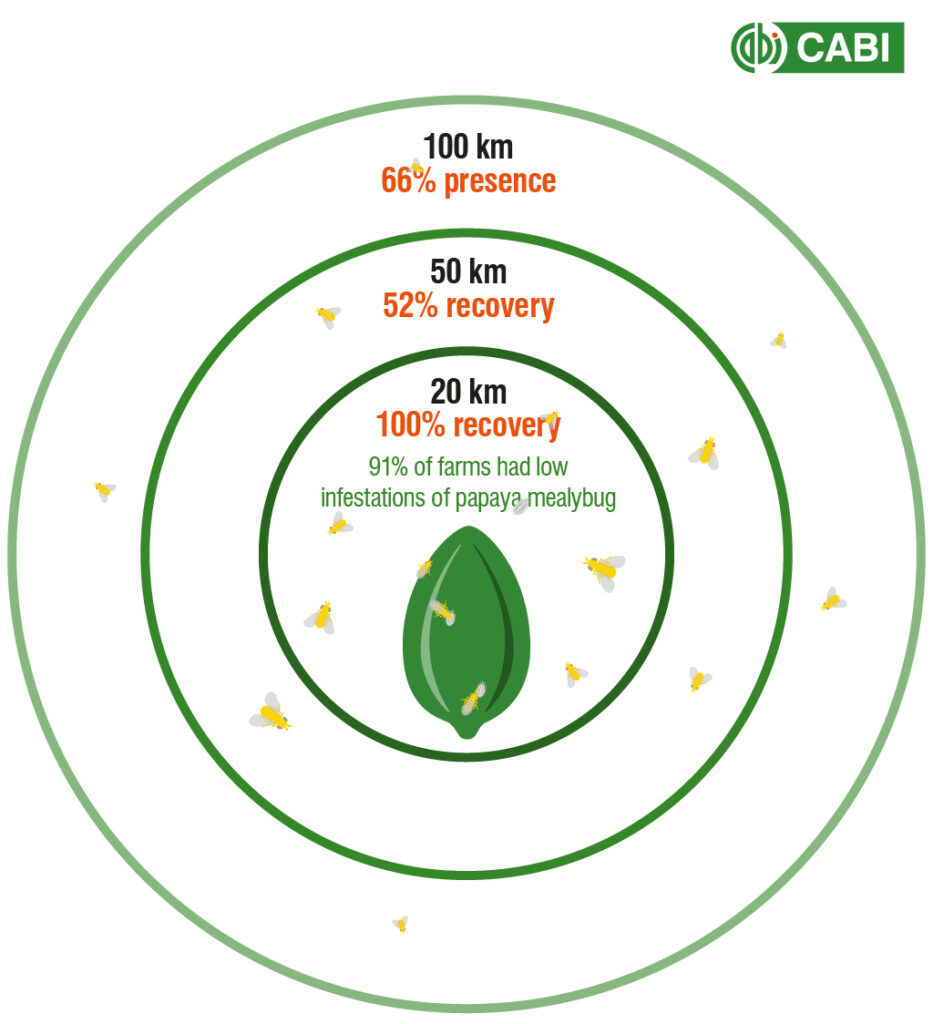
These figures highlight the mobility and adaptiveness of A. papayae. With no additional releases, the wasps dispersed across large distances, thereby bringing their pest-controlling benefits to other farms.
This exemplifies the importance of integrating biological control with sustainable farming practices, which is key to long-term pest control.
Benefits beyond the release sites
Within the first two years of being released, A. papayae was able to cause up to 76% papaya mealybug mortality. 91% of the farms located 20 km away from the initial release site had low papaya mealybug infestations. So, even though only a handful of farms were part of the initial release, nearby communities also benefited from the spread, making this a cost-effective, region-wide solution for managing papaya mealybug. As a result of the releases, the average papaya harvest also doubled, leading to a 20% increase in income for the farmers. Such outcomes underscore the economic and food security benefits of biological control.
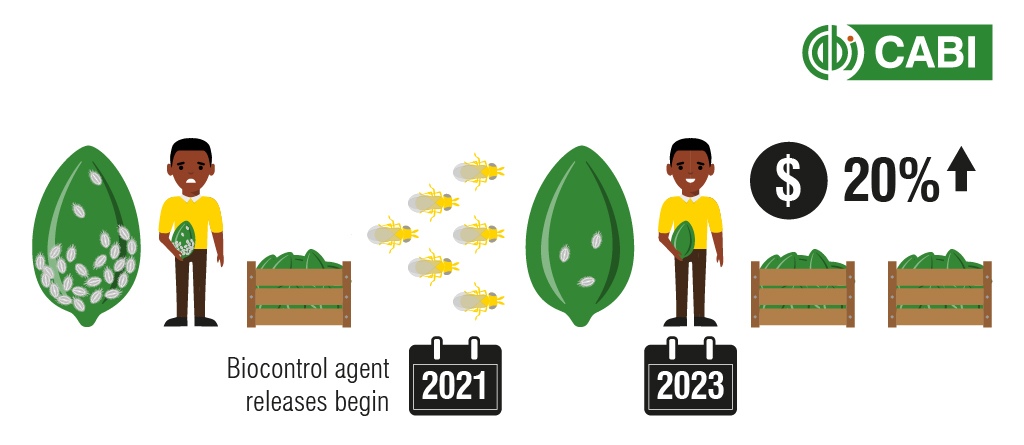
What does this mean for future biocontrol in Kenya?
All in all, using A. papayae as a means to control papaya mealybug populations has many benefits to smallholder communities. Combating the papaya mealybug through natural and sustainable means can improve farmers’ harvest levels and thus increase their income.
The success of Acerophagus papayae in Kenya offers a compelling and scalable model for sustainable pest management. Its ability to disperse naturally and establish populations far from initial release sites demonstrates its potential to protect crops over wide areas without continual human intervention.
The Kenyan government’s approval for the nationwide release of A. papayae signifies a strong institutional commitment to environmentally friendly pest control methods. This approach reduces reliance on chemical pesticides, promoting healthier ecosystems and safer food production.
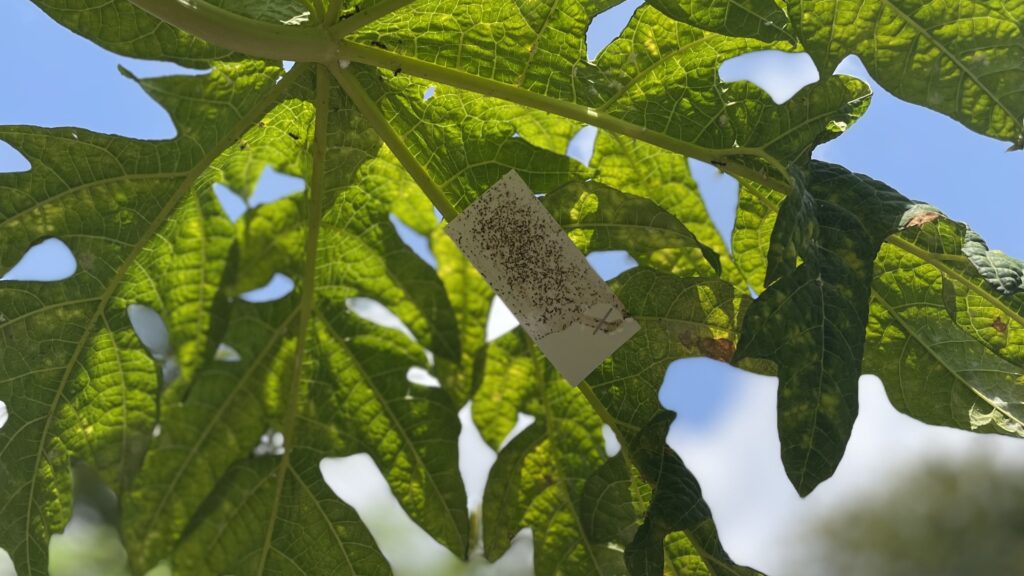
As A. papayae continues to prove its effectiveness in Kenya, it sets a valuable precedent for the broader region. Other countries facing similar agricultural challenges can draw on this model to address other invasive pests, such as mango mealybug, fall armyworm, and tomato pinworm These pests threaten staple crops and horticultural produce across Kenya, Uganda, and beyond.
By investing in well-researched and targeted biological control strategies like this one, countries have an opportunity to build more resilient, low-input farming systems that support both farmers’ livelihoods and the environment. PlantwisePlus is committed to empowering smallholder farmers to increase their incomes, improve food security, and reduce biodiversity loss through sustainable crop production practices.
Sustainable biological control agent approved to fight papaya mealybug pest across Kenya
What are Natural Enemies Field Reservoirs, and how do they help farmers control crop pests?
How a tiny wasp can save the livelihoods of papaya farmers
Common papaya disorders: A comprehensive guide
PlantwisePlus gratefully acknowledges the financial support of the Directorate-General for International Cooperation, Netherlands (DGIS); European Commission Directorate General for International Partnerships (INTPA); UK International Development from the UK government; and the Swiss Agency for Development and Cooperation (SDC).
2 Comments
Leave a Reply
Related News & Blogs
Rooting out parthenium: A milestone moment for sustainable weed management in Pakistan
Farmers “rooting out” invasive parthenium weed from their fields (Image: CABI) Parthenium hysterophorus, commonly known as parthenium or “famine weed”, is one of Pakistan’s most damaging invasive species. It spreads aggressively, suppresses crop produc…
8 December 2025

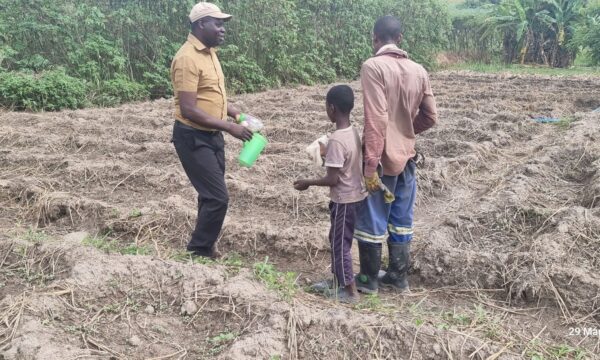
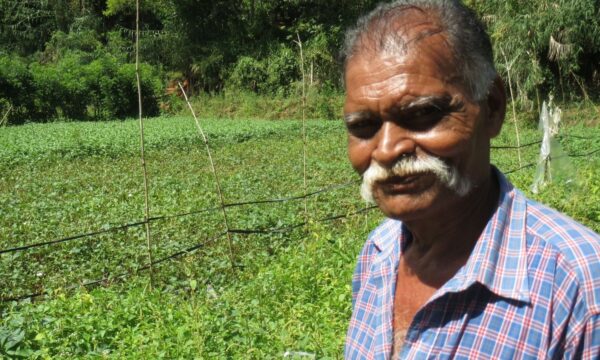
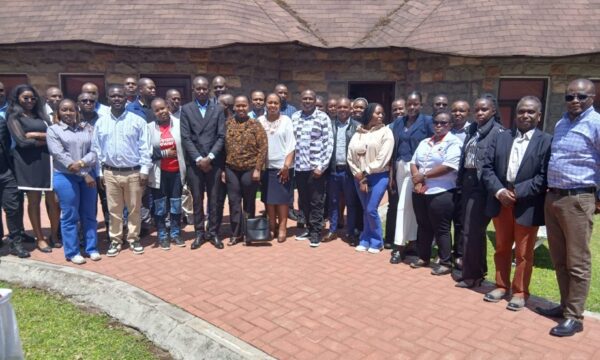
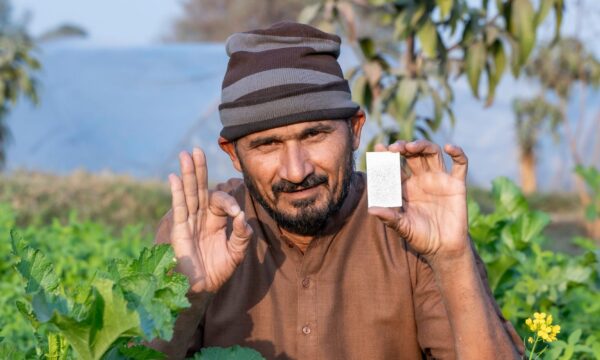
This is very interesting and positive results for the trials conducted at the coastal region of Kenya.
CABI should continue partnering with other agents in the fight of the Papaya mealy and upscale in other areas across the Country and region especially Western Kenya on Cassava.
This is true remarkable and worth replicating in other regions and crops . Am a believer and practitioner of Intergrated pest management and highly encourage biological control which economically viable. Am in kenya and i grow papaya in my farm I would love to know more on how i can access this biological control.